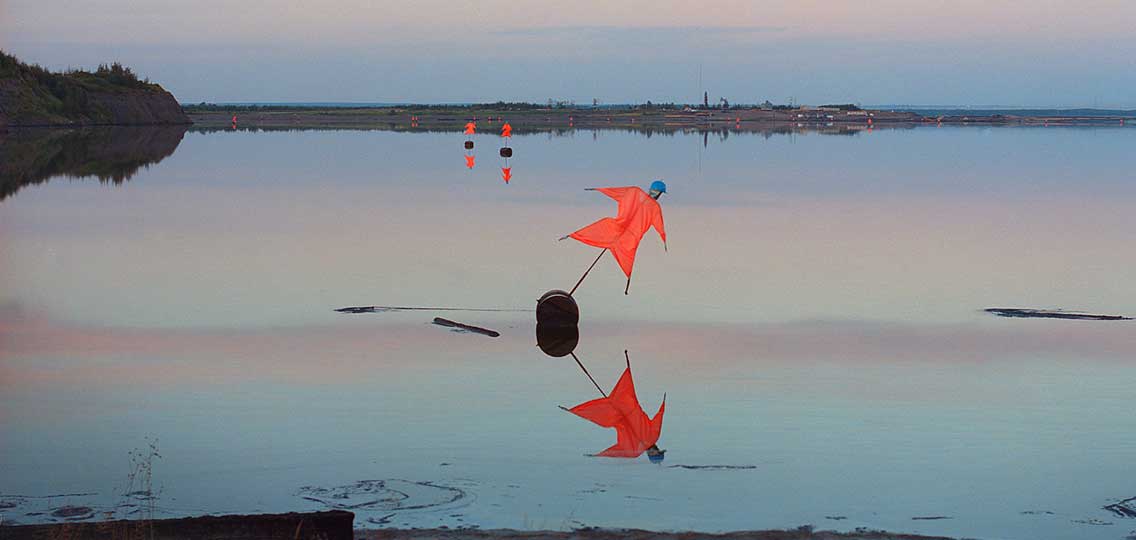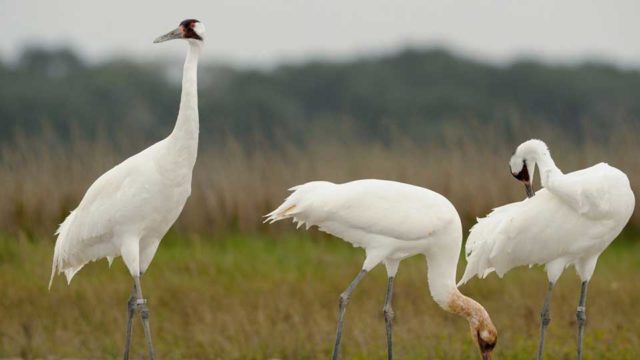Keith Stewart, Greenpeace Canada climate and energy campaigner, explains the dangers of tar sands tailings ponds pose to birds
With the winter months quickly approaching, I’m sure more than a few people will be planning trips somewhere warmer for a week or two. To get there safely, we often depend on navigation systems to guide us to our destinations.
Unlike us, migrating birds do not have the benefit of intricate navigations systems that tell them the difference between water and a toxic tailings pond that may look like a pristine body of water from hundreds of kilometres in the air.
We know that Alberta’s tar sands are some of the largest in the world. For each barrel of bitumen mined from the tar sands, 1.5 barrels of toxic tailings waste is produced— a mixture of water, sand, silt, clay, contaminants and unrecovered hydrocarbons. The math is a bit terrifying: Tailings ponds cover 220 square kilometres and contain 976 billion litres of liquid waste.
It is estimated that 200,000 birds land on tar sands tailings pond each year, with an estimated 5,000 deaths occurring annually. This number could be even higher, as birds soaked in bitumen could sink to the bottom of a tailings pond before detection or fly off after landing to die somewhere else.
Now you might be asking yourself, aren’t there deterrents in place? Well, there are, but they don’t work very well — especially in inclement weather when birds are in desperate need of a place to land.
Bird deterrent systems depend on ideal weather conditions to “work”. If it’s nighttime or a major storm is in progress, these systems have a history of failing to do their one job, deter birds from landing on tailings ponds.
As of 2010, 43 bird species — mostly birds protected by the Migratory Bird Convention Act— have died from exposure to tar sands tailings ponds.
Let’s take a minute to go through some of the most recent mass bird deaths:
- In 2008, more than 1,600 birds died after landing in a Syncrude tailings pond — Ecojustice helped make sure that this polluter was held to account for its actions.
- In 2010, more than 550 birds died when an early storm forced birds to land on Syncrude and Suncor’s toxic tailings ponds.
- In November 2014, 122 birds were reported dead after landing at three different tailings ponds in the Athabasca tar sands (CNRL Horizon, Syncrude Mildred Lake and Suncor Energy)
And these numbers don’t look to be winding down anytime soon. As long as the tar sands are around and continue to produce these death traps, migratory birds will continue to be put at risk. Out of the three listed incidents, only one tar sands operator received punishment, despite the federal government having the power to prosecute all three.
We need the government to step up and start using the tools in the Migratory Birds Convention Act that restricts toxic substances from being deposited in areas frequented by migratory birds and the Species at Risk Act that forbids the killing or harming bird species listed as endangered or threatened.


